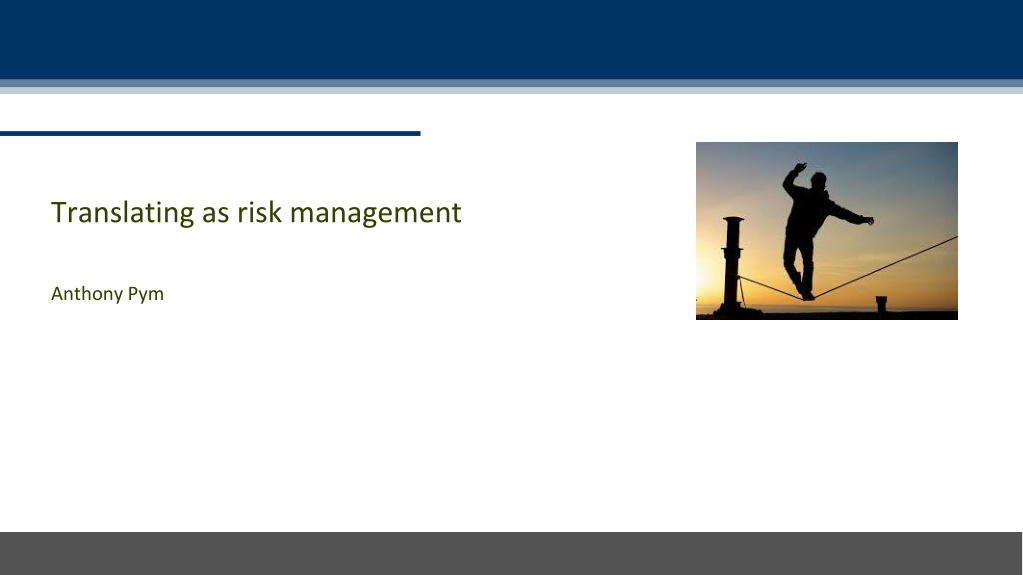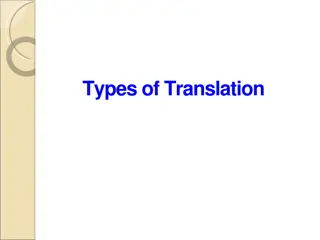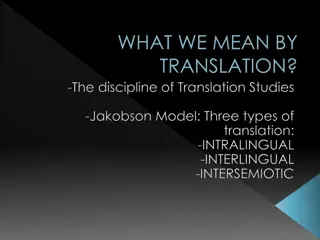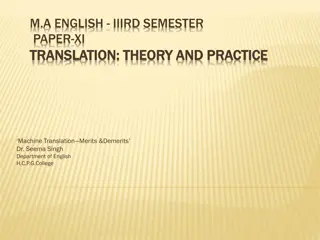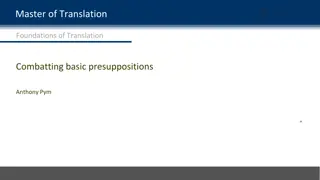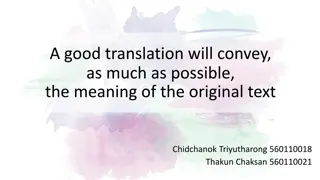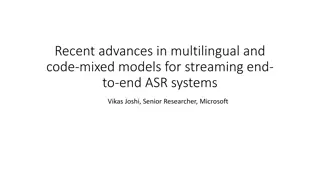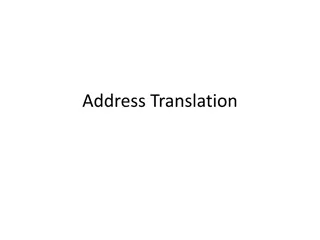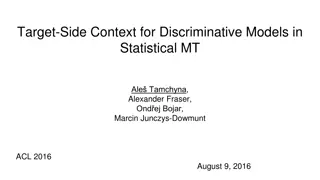Translation Strategies for Risk Management in Multilingual Contexts
Managing risks in translation involves navigating pedagogical challenges, decision-making frameworks like Skopos, and choosing appropriate translation workflows based on the stakes involved. Mistakes can occur in critical documents like birth certificates or in translating important information, such as COVID-19 guidelines. Understanding when to work hard and when to prioritize accuracy is crucial in translation scenarios.
Download Presentation

Please find below an Image/Link to download the presentation.
The content on the website is provided AS IS for your information and personal use only. It may not be sold, licensed, or shared on other websites without obtaining consent from the author. Download presentation by click this link. If you encounter any issues during the download, it is possible that the publisher has removed the file from their server.
E N D
Presentation Transcript
Translating as risk management Anthony Pym
The pedagogical problems Equivalence is limited. Skopos is an essentialist idealism. Deconstruction does not help us make decisions.
Example 1 In a birth certificate, where can you make a mistake? - Name of person born? - Date of birth? - Name of midwife?
This means Only work hard when the stakes are high. Don t work hard when the stakes are low. (Don t work too hard!) (These guidelines do not require equivalence.)
What solutions for what stakes? Workflows Tasks A. Raw MT B. Light post-editing C. Heavy post-editing D. Fully human translation with no revision E. Collaborative translation (done with a group of translators) F. Fully human translation with double revision/review 1. When does curfew begin in Prague? 2. Translating today s weather report for Tasmania. 3. Translating a Russian drivers license in order to drive a school bus in Australia. 4. Translating a children s lullaby because I want my baby to sleep. 5. Translating a speech by the President of Russia. 6. I want to order some food on an English menu and I don t understand the name of the dish.
Where can you make mistakes when translating this text? When you must self-isolate You must self-isolate if you - have been tested for COVID-19 and haven t yet received your result - have been diagnosed with COVID-19 - are suspected of having COVID-19 - had close contact with a confirmed case of COVID-19, including visiting a case location - are a household member of a close contact who has yet to receive their initial negative test result - have returned from overseas and are exempt from hotel quarantine.
Where can you make mistakes when translating this text? When you must self-isolate You must self-isolate if you - have been tested for COVID-19 and haven t yet received your result - have been diagnosed with COVID-19 - are suspected of having COVID-19 - had close contact with a confirmed case of COVID-19, including visiting a case location - are a household member of a close contact who has yet to receive their initial negative test result - have returned from overseas and are exempt from hotel quarantine.
Two kinds of risk Communicative risk: The possibility that mutual benefits are not achieved (or are of less value than the transaction costs). Credibility risk: The translator is no longer trusted.
But what is risk here? The probability of failing (not meeting success conditions). Individual failure: When one s benefits are less than the efforts (transaction costs). Social failure: When the mutual benefits are less than the mutual efforts (i.e. when there is no cooperation).
Attitudes in risk management Risk aversion Risk transfer Risk seeking Trade offs
Signs of risk aversion Lexical simplification, since translations tend to use a narrower range of different words; Explicitation, since translations tend to be more redundant; Adaptation, since translations tend to adopt the discursive norms of the target culture; Unique items, items used in the TL only tend not to be used in translations in that language. Equalizing, since translations tend avoid the extremes of discursive ranges, particularly on the oral-literate continuum.
Risk transfer Ask your client Refer to an authority Foreign students will need to convalidar or homologar their first degree. Convalidaci n = accreditation Homologaci n = accreditation
Risk transfer seek accreditation = low risk? Use Spanish terms = low risk? Omit phrase = high risk! ... More information is needed.
Risk taking Translation of humor Translation in subtitles Highly localized texts Advertising Texts of salvation
Risk trade-offs To minimize the consequences of fire damage, we accept water damage. To minimize the risk of many deaths, we curtail economic activity. Gemeinde(German unit of local government) (example from Newmark)
Risk trade-offs CANARIAS, otro mundo que debes descubrir. Quieres descubrir un mundo nuevo? Haz como Col n, pasa por Canarias. The Canary Islands. A whole world waiting to be discovered. Looking for a new world? See the Canaries first. Columbus did The Canary Islands, another world you must discover. Do you want to discover a new world? Do what Columbus did. Pass by the Canaries The Canary Islands. Looking for a new world? See the Canaries first. Columbus did.
Risk trade-offs levantador de piedra escocesa a lifter of Scottish stone Please let us know if there is any chance of having a Scottish rock lifter come here as well (there must be a more technical term for the sport, but I m afraid we don t know it).
Western reward structure? Authors always get the praise for what is good in a translation, and translators just get the blame for what is wrong (Leonardo Bruni 1405)
